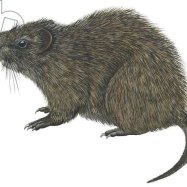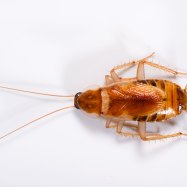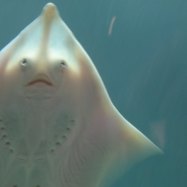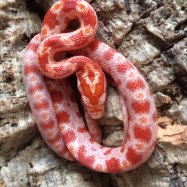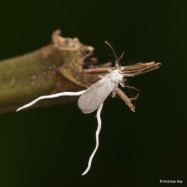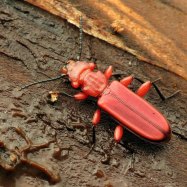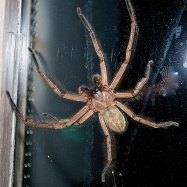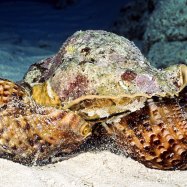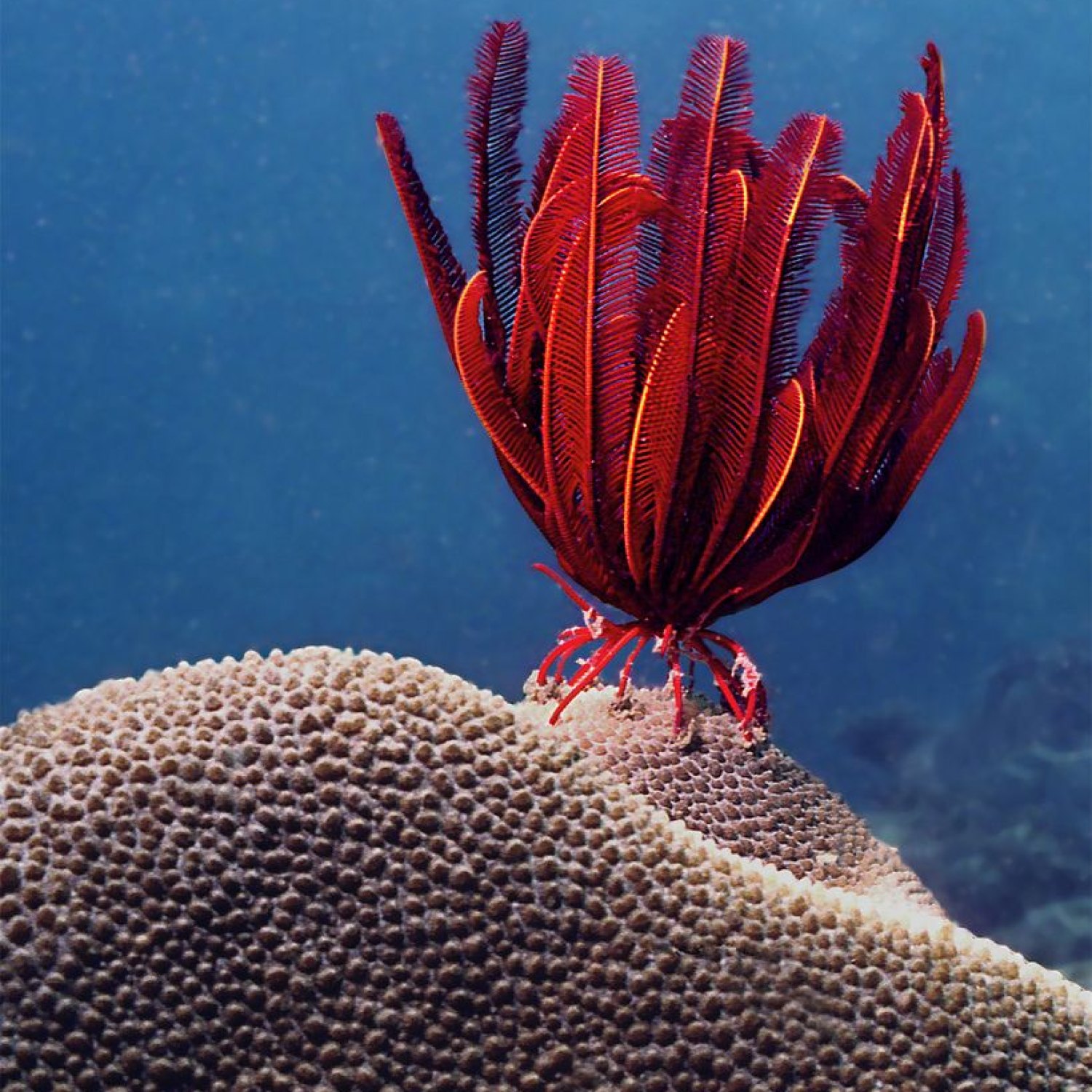
Feather Star
Approximately 6 inches to 3 feet
Feather stars, also known as crinoids, are fascinating sea creatures found in the world's oceans. Ranging from 6 inches to 3 feet, these flower-like animals have long, feathery arms that help them move and capture food. They can be spotted in various locations, including coral reefs and seagrass meadows, making them popular among divers and snorkelers. Keep an eye out for these stunning creatures on your next underwater adventure!
Animal Details Summary:
Common Name: Feather Star
Kingdom: Animalia
Habitat: Marine
The Enigmatic Beauty of Feather Stars: A Unique Marine Creature
Deep down in the vast oceans, amongst the shimmering corals and dancing marine life, lies a creature that captures the imagination with its ethereal beauty - the Feather Star. Scientifically known as Crinoidea, this stunning creature is commonly referred to as the Feather Star due to its resemblance to a feathered bird in flight.But there's much more to this intriguing marine animal than just its name. In this article, we'll take a deep dive into the world of Feather Stars, exploring their unique features, behavior, and habitat Feather Star.
A Classification Beyond the Ordinary
Feather Stars belong to the kingdom Animalia, making them an animal species, despite their plant-like appearance. Their phylum is Echinodermata, which includes animals such as sea stars and sea cucumbers. Within this phylum, Feather Stars fall into the class Crinoidea, along with sea lilies. Their order is Comatulida, and they belong to various families, which differ depending on the species.With such a diverse classification, it's clear that Feather Stars are a unique and intriguing creature, unlike any other in the vast ocean kingdom.
A Habitat Fit for Kings
Feather Stars are found all over the world, making them a truly global creature. They are predominantly found in marine environments, with a preference for tropical and subtropical waters. These stunning creatures can be spotted in various locations such as coral reefs, rocky bottoms, and seagrass meadows.Their preferred habitat is usually shallow waters, making them easily visible to snorkelers and divers Fluke Fish. Furthermore, Feather Stars are also found in the deeper parts of the ocean, with some species living as deep as 26,000 feet.
A Diet for the Discerning
Feather Stars are known as filter feeders, which means they rely on filtering the water around them for food. They have a unique feeding method, where they use their feathery arms to create a current that brings in tiny particles of food, such as plankton and other small organisms, to their mouths.This feeding technique is not only efficient but also mesmerizing to watch, as the Feather Star's arms gently sway to and fro, creating an otherworldly dance in the water.
The Colorful World of Feather Stars
Feather Stars come in a variety of colors, depending on their species. Some are vibrant hues of yellow, while others are deep shades of brown. The colors on their bodies are not only aesthetically pleasing but also serve as a form of camouflage to protect them from predators.What's truly fascinating about Feather Stars is their ability to change color through a process called chromatophores. Similar to a chameleon, this allows them to blend in with their surroundings, making them almost invisible to predators.
A Unique Body Shape Like No Other
The most distinctive feature of Feather Stars is their flower-like body shape with long feathery arms. These arms are supported by a strong central stem, known as the calyx, which acts as the Feather Star's main support line.The arms of a Feather Star are lined with thousands of tiny tube feet, which they use for movement and feeding. This unique body structure enables Feather Stars to gracefully float and move through the water, earning them the nickname "sea lilies."
One Size Does Not Fit All
Feather Stars come in a variety of sizes, with some species measuring a mere 6 inches, while others can reach up to 3 feet in length. Their size is often determined by their habitat, with those living in deeper waters tending to be larger than those in shallower regions.Despite their seemingly delicate appearance, Feather Stars are resilient creatures, capable of surviving in even the harshest of ocean conditions.
An Enchanting Creature with a Rich History
The intriguing features and behavior of Feather Stars have long fascinated humans, leading to a rich history and cultural significance in various societies.In ancient times, Feather Stars were considered to have magical properties and were often used in potions and deemed as miraculous cures for ailments. They were also used for decorative purposes, with their graceful arms and vibrant colors making them an excellent addition to paintings and sculptures.
Furthermore, their unique body structure has also made appearances in literature and mythology, with references to Feather Stars being found in ancient Greek, Roman, and Chinese writings.
The Threats Facing Feather Stars
Despite their resilient nature, Feather Stars face numerous threats, including human activities and natural disasters. One of the most significant threats is overfishing, which has decimated certain populations of Feather Stars, as they often end up as bycatch in fishing nets.Pollution is another major issue, with the release of contaminants into the ocean affecting the delicate balance of marine life, including Feather Stars. Additionally, changes in water temperature and acidity due to climate change have also had a detrimental impact on the survival of these creatures.
Conservation Efforts for Feather Stars
Thankfully, there are ongoing conservation and protection efforts for Feather Stars and their fragile habitat. Marine protected areas, such as marine parks and reserves, have been established to safeguard these creatures and their environment.Efforts are also being made to educate the public on the importance of preserving the ocean and its inhabitants, including Feather Stars. This includes advocating for responsible fishing practices and reducing pollution.
The Future of Feather Stars
Feather Stars may not be as well-known as other marine animals, but they possess an otherworldly charm and are an essential part of our ocean ecosystem. As humans, it's our responsibility to ensure the protection and preservation of these beautiful creatures and their unique habitat.By raising awareness and taking steps to reduce our impact on the oceans, we can help create a safer and more sustainable future for Feather Stars and other marine creatures.
In conclusion, Feather Stars are an enigmatic and captivating creature, with a rich history and important role in our oceans. Their unique features and behavior make them an essential part of the natural world, and it's our job to ensure their survival for generations to come.

Feather Star
Animal Details Feather Star - Scientific Name: Crinoidea
- Category: Animals F
- Scientific Name: Crinoidea
- Common Name: Feather Star
- Kingdom: Animalia
- Phylum: Echinodermata
- Class: Crinoidea
- Order: Comatulida
- Family: Various
- Habitat: Marine
- Feeding Method: Filter Feeder
- Geographical Distribution: Worldwide
- Country of Origin: Various
- Location: Coral reefs, rocky bottoms, seagrass meadows
- Animal Coloration: Varies by species, commonly brown or yellow
- Body Shape: Flower-like with long feathery arms
- Length: Approximately 6 inches to 3 feet
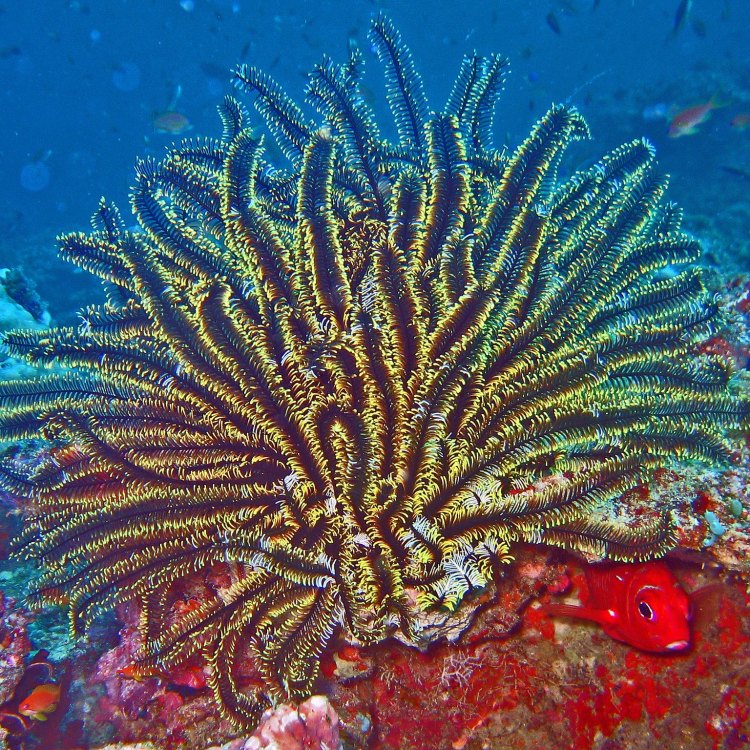
Feather Star
- Adult Size: Varies by species, commonly around 1 foot
- Average Lifespan: 10-20 years
- Reproduction: Sexual
- Reproductive Behavior: Broadcast spawning
- Sound or Call: None
- Migration Pattern: Some species migrate vertically
- Social Groups: Solitary or colonial
- Behavior: Slow-moving, attached to substrates
- Threats: Habitat destruction, pollution, overfishing
- Conservation Status: Varies by species
- Impact on Ecosystem: Important in the food chain, provide habitat
- Human Use: Marine aquarium trade
- Distinctive Features: Long feathery arms
- Interesting Facts: Feather stars can detach and regenerate their arms
- Predator: Various predators including fish, crustaceans
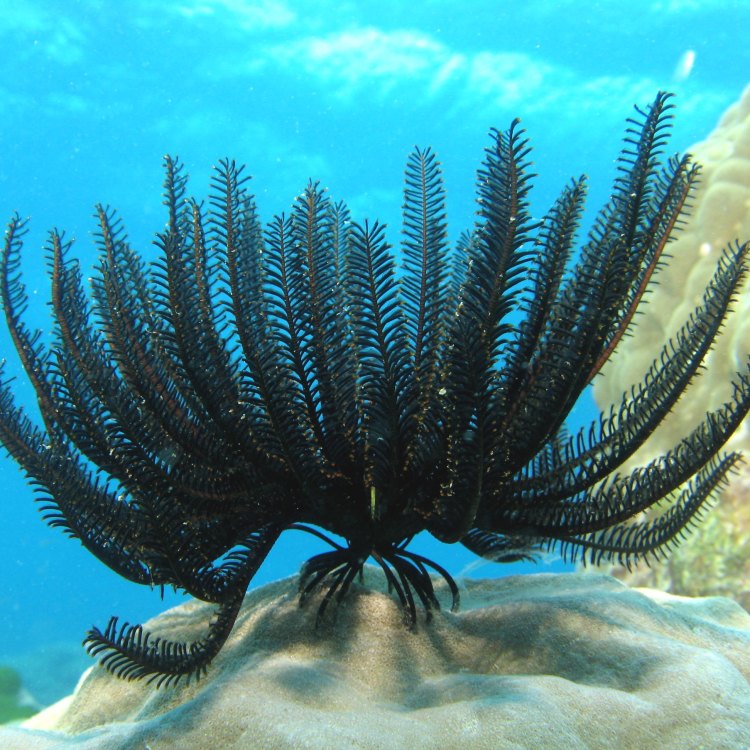
Crinoidea
The Incredible World of Feather Stars: Delicate and Dazzling Ocean Creatures
The ocean is full of wonders, and one fascinating creature that often gets overlooked is the feather star. These beautifully delicate creatures can be found in oceans all around the world, and they are truly mesmerizing to watch. From their unique appearance to their remarkable behavior, there is so much to discover about these sea creatures. So let's dive deeper (pun intended) into the world of feather stars PeaceOfAnimals.Com.The Basics
Feather stars are marine invertebrates and belong to the class Crinoidea. They are often referred to as sea lilies due to their resemblance to the garden flowers. However, unlike sea lilies, feather stars can move around and are not fixed to the ocean floor. They have a central body with long, feathery arms extending outwards, giving them a distinct and elegant appearance. The adult size of a feather star varies by species, but they typically range from 6 inches to 2 feet in length.Feather stars have an impressive lifespan, with some species living up to 20 years in the wild. This long lifespan is partly due to their slow metabolism and low-energy lifestyle. They are also known to have a low reproductive rate, with females only producing a small number of eggs each year. This makes it essential for conservation efforts to protect feather stars to ensure their survival in the ocean Florida Gar.
Reproductive Behavior and Migration
One of the most interesting aspects of the feather star's life is their reproductive behavior. While they reproduce sexually, they also engage in a process called broadcast spawning. This means that they release their eggs and sperm into the water, where fertilization happens externally. This process increases the chances of successful fertilization and provides genetic diversity within the population.Some species of feather stars have a unique migration pattern, where they migrate vertically in the water column. This vertical migration is often related to water temperature, with some species moving to warmer waters during colder months. This behavior is essential for their survival and helps them find the right conditions for reproduction and feeding.
Social Behavior and Predators
Feather stars can be solitary or colonial, depending on the species. Some species prefer to live alone, while others form clusters with other feather stars, attaching themselves to the same substrate. This social behavior helps them find food, share resources, and provide protection from predators. However, not all predators can be deterred by this cluster formation.These graceful creatures may seem like they have no defense mechanisms, but they do have some tricks up their sleeves (or arms). Feather stars have spiny arm joints, which can act as a deterrent against predators such as fish and crustaceans. Some species also have toxic substances on their arms, making them unappealing to potential predators.
Threats and Conservation Status
Like many marine creatures, feather stars are facing significant threats to their survival. Habitat destruction, pollution, and overfishing are the main factors affecting these creatures. As they are slow-moving and attached to substrates, any habitat destruction or pollution can directly impact their survival. In addition, overfishing can also harm their population as they are often caught as bycatch.The conservation status of feather stars varies by species, with some being listed as vulnerable or endangered. Therefore, it is crucial to protect and preserve their habitats through conservation efforts. This will not only benefit the feather stars but also the entire ecosystem they are a part of.
Impact on the Ecosystem
Feather stars may seem like small and insignificant creatures, but they play a crucial role in the marine ecosystem. They are filter feeders, which means they consume small particles from the water, such as algae and plankton. By doing so, they help maintain the water quality and balance the ecosystem. They are also an important food source for many predators, making them an essential link in the marine food chain.In addition to their role in the food chain, feather stars also provide habitat for other marine creatures. Their arms serve as a safe haven for small fish and invertebrates, providing shelter and protection. This makes them an essential part of the marine community and highlights the importance of preserving their populations.
Human Use and Interesting Facts
Feather stars may not be as popular as other marine creatures, but they are still sought after for the marine aquarium trade. Their unique appearance and slow-moving behavior make them an attractive addition to home aquariums. However, it is crucial to ensure that these creatures are ethically and sustainably sourced to avoid any negative impact on their wild populations.Besides their long feathery arms, feather stars also have another interesting ability – they can detach and regenerate their arms. This means that if they are caught or harmed, they can detach their arms and grow them back. This adaptation helps them survive in the wild and adds to their overall uniqueness.
The Final Word
In conclusion, the world of feather stars is full of incredible facts and features that make them truly remarkable creatures. From their beautiful appearance to their important role in the marine ecosystem, it is evident that they are a crucial part of our oceans. It is our responsibility to protect and preserve these delicate and dazzling creatures for future generations to admire and appreciate. So the next time you see a feather star in the ocean, take a moment to appreciate their beauty and wonder.
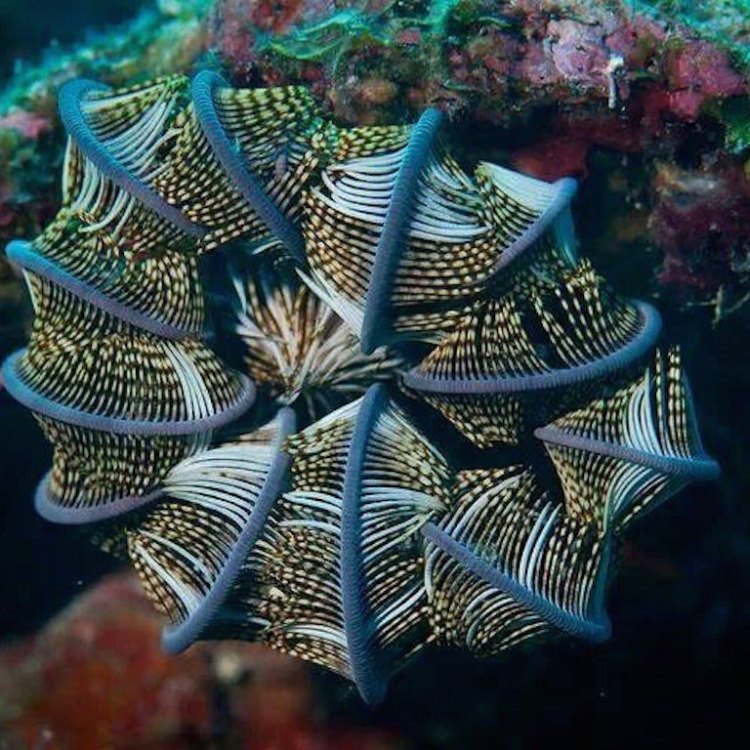
The Enigmatic Beauty of Feather Stars: A Unique Marine Creature
Disclaimer: The content provided is for informational purposes only. We cannot guarantee the accuracy of the information on this page 100%. All information provided here may change without prior notice.

